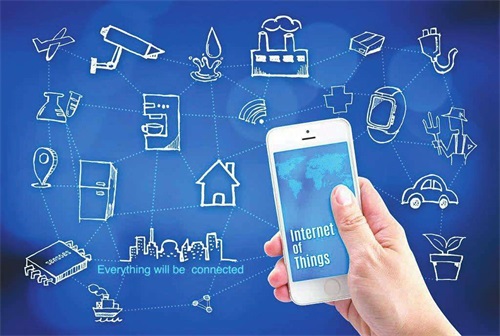It is reported that 80% of people cannot tell the difference between sensor networks and the Internet of Things. What is the specific difference between the two? Today, this article will analyze the mystery.


1. What is the Internet of Things?
The initial concept of the Internet of Things was proposed by the United States. It is a network concept that connects all items through the Internet of Things domain name for information exchange and communication to achieve intelligent identification, positioning, tracking, etc. Of course, the official definition of the Internet of Things is: based on the Internet, the process of communication between incommunicable objects is called the Internet of Things.
2. Principles of Internet of Things
The Internet of Things is based on the computer Internet and uses RFID, wireless data communication and other technologies to construct an “Internet of Things” covering everything in the world. In this network, items (commodities) can “communicate” with each other without human intervention. Its essence is to use radio frequency automatic identification (RFID) technology to realize automatic identification of items (commodities) and interconnection and sharing of information through the computer Internet.
The emergence of the concept of “Internet of Things” has broken the previous traditional thinking. The thinking in the past has been to separate physical infrastructure and IT infrastructure: airports, roads, buildings on the one hand, and data centers, PCs, broadband, etc. on the other. In the “Internet of Things” era, reinforced concrete and cables will be integrated with chips and broadband into a unified infrastructure. In this sense, the infrastructure is more like a new earth construction site on which the world operates. Among them Including economic management, production operation, social management and even personal life.
3. Characteristics of the Internet of Things
1. Comprehensive perception, that is, using RFID, sensors, QR codes, etc. to obtain information about objects anytime and anywhere;
2. Reliable transmission, through the integration of various telecommunications networks and the Internet, the object information can be transmitted accurately in real time;
3. Intelligent processing, using cloud computing, fuzzy recognition and other intelligent computing technologies to analyze and process massive amounts of data and information, and implement intelligent control of objects.
4. Application fields of Internet of Things
The Internet of Things is widely used, involving intelligent transportation, environmental protection, government work, public safety, safe homes, intelligent fire protection, industrial monitoring, environmental monitoring, street lighting control, landscape lighting control, building lighting control, square lighting control, elderly care, Personal health, flower cultivation, water system monitoring, food traceability, enemy reconnaissance and intelligence collection and other fields.


5. What is a sensor network?
The sensor network is a multi-hop self-organized network system composed of a large number of cheap micro-sensor nodes deployed in the monitoring area and formed through wireless communication. Its purpose is to collaboratively sense, collect and process information about sensing objects in the network coverage area and send it to observers.
There are three main elements of a sensor network: sensor, sensing object and observer.
6. Key technologies and characteristics of sensor networks
Key technologies of WSN: network topology control, network protocols, network security, time synchronization, positioning technology, data fusion, data management, wireless communication technology, embedded operating system, and application layer technology.
Features: Large-scale networks, self-organizing networks, dynamic networks, reliable networks, application-related networks, and data-centric networks.
7. Main application areas of sensor networks
Military applications, environmental observation and forecasting systems, medical care, smart homes, building condition monitoring, other applications (such as space exploration, smart dust, etc.).


8. The difference between sensor network and Internet of Things
1. Broadly speaking, the components of the Internet of Things and sensor networks are basically the same, and they are different expressions of the same thing. The Internet of Things is closer to the essential attributes of “things” than the sensor network, emphasizing that information technology and equipment are ” “Things” provide higher-level application services; while sensor networks (sensor networks) are objectively described from the perspective of technology and equipment, and the elements of equipment and technology are relatively obvious. For example, the sensor network is a scientific name and the Internet of Things is a common name; or the sensor network is a big name and the Internet of Things is a nickname.
2. From an industry and user perspective, it is called the Internet of Things; from a technical support perspective, it is called a sensor network. The Internet of Things and the sensor network are the same thing, and their essence is the perception sensor network.